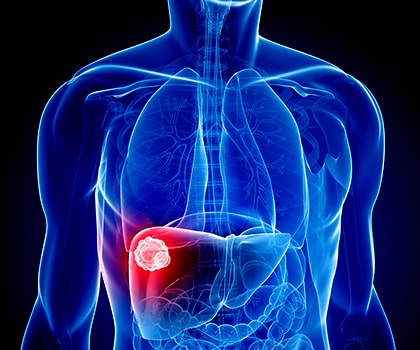Chemoembolization - Treatment for Liver Cancer
Chemoembolization, a procedure for Liver Cancer Treatment, is a combination of localized Chemotherapy and Embolization. It is a minimally invasive treatment that can be used when the tumor is too large to treat with Radio Frequency Ablation (RFA); the tumor in a location that can’t be treated with RFA; or in combination with RFA and other treatments, such as surgery, Chemotherapy or Radiation therapy.

- Any blockage of the portal vein
- Cirrhosis of the liver
- A blockage of the bile ducts
Chemoembolization procedure for Liver Cancer Treatment is performed by placing a small catheter from the blood vessel in your groin into the artery that supplies blood to the liver. This is analogous to the more familiar cardiac angiogram. The chemotherapeutic drugs are then delivered through the catheter along with a blood vessel occluding agent right at the place of the tumor. The result is that a very highly concentrated dose of the anti-tumoral drug is delivered (without the normal dilution that occurs with a standard intravenous infusion) and the blood vessels are partially blocked with the agent to cease the tumor of its blood supply. This “double-punch” can slow or stop tumor growth, and in some cases can even result in significant shrinkage of the tumor.
The Patient’s stay in Hospital is usually two to four days. Patients typically have lower than normal energy levels for about a month afterward. It is a palliative, not curative, treatment. But it can be extremely effective in treating primary liver cancers, especially when combined with other therapies.
Q: What are the side effects?
A: A low-grade temperature (< 1020 F) for one week.
Nausea or vomiting, lethargy, decreased appetite for several days.
Bruises at the groin puncture site.
Some hair loss which may be unnoticed.
